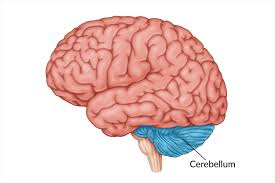CBNS 126 Lecture 1 (Intro and Mind to molecules)
1/33
There's no tags or description
Looks like no tags are added yet.
Name | Mastery | Learn | Test | Matching | Spaced |
|---|
No study sessions yet.
34 Terms
Major question in neuro
• How is memory encoded? – memory acquisition.
• How is a short-term memory converted into a long-lasting memory? – memory consolidation.
• Where is memory stored? – memory location.
• What is a physical record of memory? – memory trace.
• How is memory retrieved? – memory recall
The four c’s
connection
cognition
compartmentalization
consolidation
Connection
The most basic level of analysis of memory, the basic nature of the circuitry of the brain
how 2 neurons communicate
figure out how connected, then study synaptic plasticity
• the elements of information processing
• how neurons communicate to each other in the service of memory
Cognition
refers to the psychological aspect of neuroscience
nature of memories at the highest level of analysis, psychological level
Compartmentalization
memory localization
different memories are accomplished by specific:
• modules
• circuits
• pathways
• systems
notion of compartmentalization
there are many interconnected cognitive processing centers in the brain that are processing newly acquired information.
ex:
amygdala is required for fearful memories establishment and storage. (temporal, in hippocampus)
Formation of memories about context and space involves information processing in hippocampal-cortex memory system (temporal lobe)
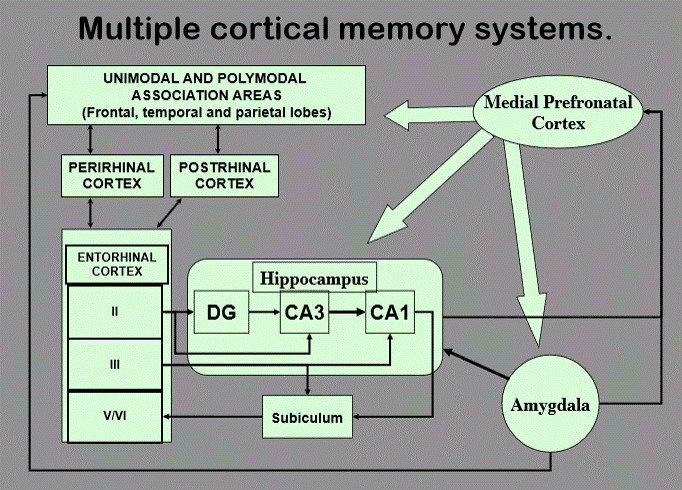
Consolidation (SM to LM) recall muler and pilzecker
when and how memories become permanent
Memories are initially labile
– conversion into long lasting memories
Memory consolidation can be study at two different level of analysis:
Memory fixation: cellular/molecular mechanism (synaptic plasticity)
Occurs within the first minutes to hours after learning.
Involves changes at the synapse (synaptic plasticity).
When neurons are repeatedly activated together, their connections become stronger (Hebbian learning).
Key processes:
Long-Term Potentiation (LTP): Strengthens synaptic transmission between neurons.
Protein synthesis: Needed to stabilize new synaptic changes.
Structural growth: New dendritic spines and synapses may form.
This level “locks in” the trace of the memory at the neural connection level.
Memory reorganization
Occurs over days, weeks, or even years.
The memory gradually becomes independent of the hippocampus and is stored across the cortex.
Integration: New information is woven into existing knowledge networks (schemas).
Interactions: Involves communication between the hippocampus, neocortex, and other brain regions.
Often supported by sleep—especially slow-wave sleep, which helps transfer memories to long-term storage.
This process gives memories more meaning, context, and permanence.
Loss of memories can lead to serious neurocognitive issues
alzheimer’s
huntingtons
mental retardation
weakening memory with age (so many factors)
50% chance to age successfully and normally
** weaking happens regardless (a tad)
Learning and Memory
learning: acquisition of new information
memory: retention of learned information
way info is stored may change over time
5 memories
acquisition (encoding)
consolidation (SM to LM)
location (stored)
trace (physical record of it)
recall (retrieval)
Declarative memory
explicit and conscious
facts, events, episodic from life, semantic
hippocampus dependent (system level)
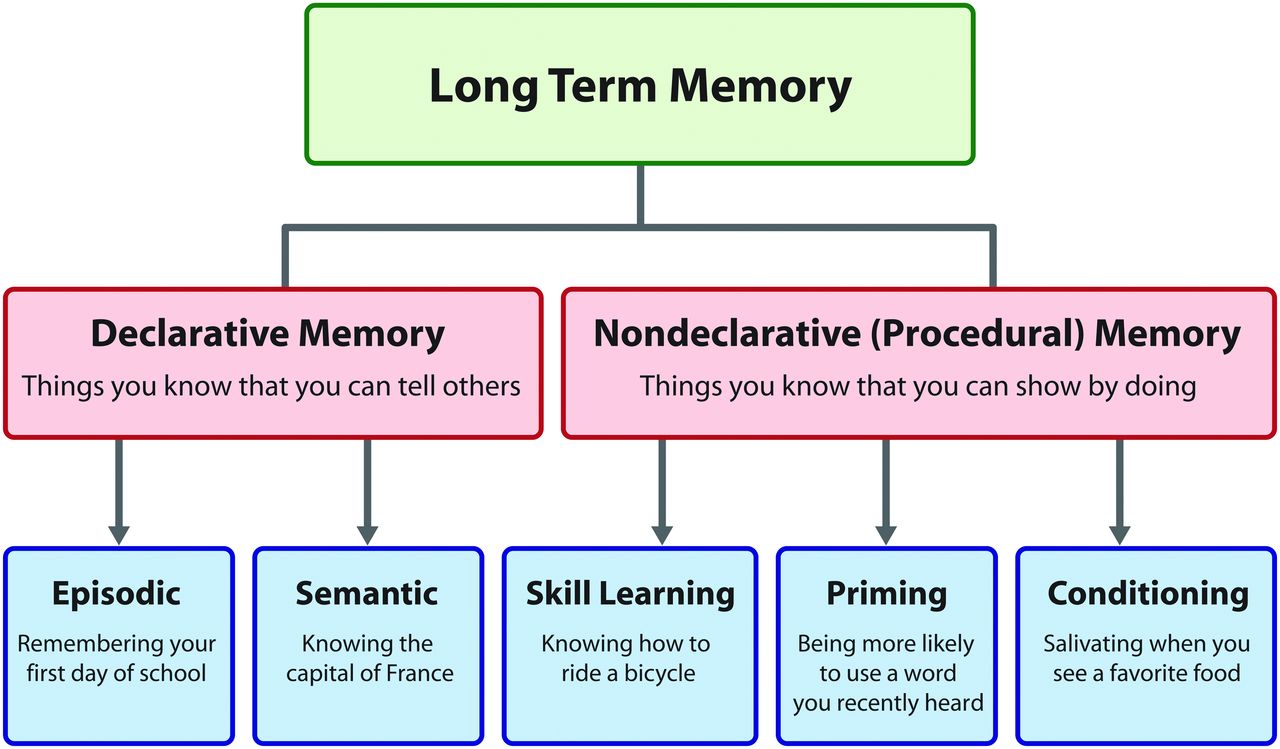
Nondeclarative memory
implicit and unconscious
procedural: skills, habits, behaviors
basal ganglia and cerebellum (motor)
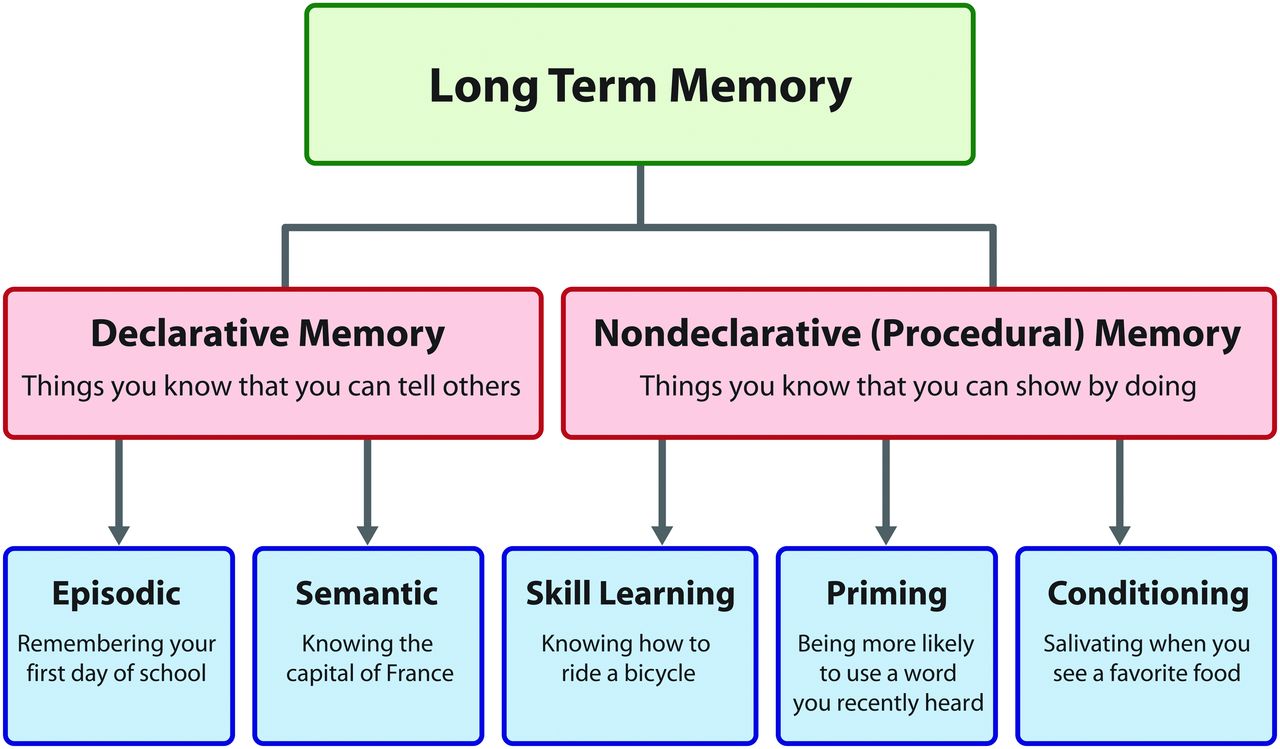
Multidisciplinary study of learning and memory
Philosophy
What aspects of the mind’s knowledge are innate, and to what extent can the experience influence that innate organization?
Psychology
How does memory work?
Are there different kinds of memory?
Biology
What are the brain structures recruited during L&M?
Where do we store what is learned as memory?
Can memory storage be resolved at the level of individual neural cells?
modern neuroscience is the combo of biology and psych
Memory as a psych process: Herman Ebbinghaus 1880s
established experimental and quantitative ways to study memory
verbal memory
Study: made 2300 new syllables (lacked meaning for participants)
learning: studied the number of repetitions and recollection after various delays
Method: Self-experiments with nonsense syllables
Measure: Savings → faster relearning after delay
Findings:
Forgetting curve → rapid initial loss, then slows
Savings effect → memory traces persist
Spacing effect → spaced learning > massed
Conclusion: Memory loss is systematic; relearning easier than initial learning
Found:
memories have different span (SM and LM)
repetitions make memories last longer
Memory as a psych process: George Muller and Alfons Pilzecker (1892-1900)
came up with the notion that short lived memories can be consolidated with time
“learning does not induce instantaneous permanent memories but that memory takes time to be fixed or consolidated”
“memory remains vulnerable to disruption for some time after learning
used a list of nonsense syllables like ebbinghaus
Study:
After learning the first list, some participants:
Rested for a short period before learning a second list.
Immediately learned a second list with no delay
Found:
When participants were tested later on the first list, recall was much better if there had been a delay before the second list was introduced.
If the second list came right away, recall of the first list was significantly worse
Consolidation needs to occur to stabilize memory
Memory as a psych process: Sergei Korsakoff
Korsakoff’s syndrome:
Cause: Chronic thiamine (vitamin B1) deficiency, often due to long-term alcoholism
Brain damage: Especially to medial diencephalon (thalamus, mammillary bodies)
Symptoms:
Severe anterograde amnesia (can’t form new memories)
Some retrograde amnesia (loss of past memories)
Confabulation (making up stories to fill memory gaps)
Apathy, lack of insight
Developed idea: How does this function affect the brain and how does the loss of function predict what area caused it
**too broad
Brocha did better job
Memory as a psych process: William James
Provided distinction btwn SM and LM
Short-term memory
• lasts seconds to minutes, and is essentially extension of present moment
E.g. looking up a phone number to call
Long-term memory
• can last weeks, months or even lifetime.
E.g. reaching into the past, childhood memories
Behaviorist revolution: Procedural learning (non declarative)
motor response in response to sensory input
Learning:
nonassociative
associative
👉 Key difference:
Habituation = tuning out irrelevant/repeated stimuli.
Sensitization = tuning in more strongly to stimuli, especially after something intense or threatening.
nonassociative: habituation (1 stimuli)
learning to ignore stimulus that lacks meaning
ex:
Living near train tracks → at first the noise is loud and distracting, but over time you stop noticing it.
A ticking clock that fades into the background.
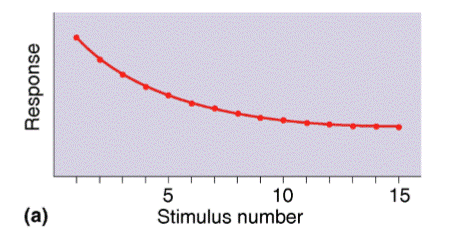
nonassociative: sensitization (1 stimuli)
An increase in responsiveness to a stimulus, often after an intense or noxious one.
ex:
Hearing a sudden gunshot → you become hyper-alert, so even small noises (like footsteps or a door creak) trigger a strong reaction.
After a scary movie, every little sound makes you jump.
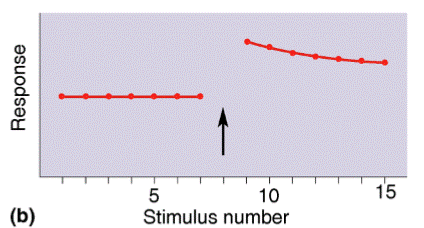
associative: classical conditioning
THE BASIS OF LEARNING
Pavlovian conditioning occurs when a neutral stimulus (CS) is repeatedly paired with an unconditioned stimulus (US) until the conditioned stimulus (CS) alone elicits a conditioned response (CR).
laid the foundation for the paradigm that a stimuli can formulate a response (relationship), which led to other scientists to modulate this
basis of learning (Pavlovian conditioning cont.)
We learn something through the relation of it to something (has consequences on our knowledge)
We learn to predict future based on experience (memory)
stimulus predicts output
measures relationship
IMPORTANCE:
**u can find what circuits are part of this process (molecular, cellular, and cognitive basis)
can find the circuit and track it
Once you find a circuit, you find a neuron that detects the presence of these 2 stimuli
**this paradigm can be applied to other things
Memory as a neural process: Brain and neuron anatomy
**recall brain anatomy if confused
Neurons
Glia cells
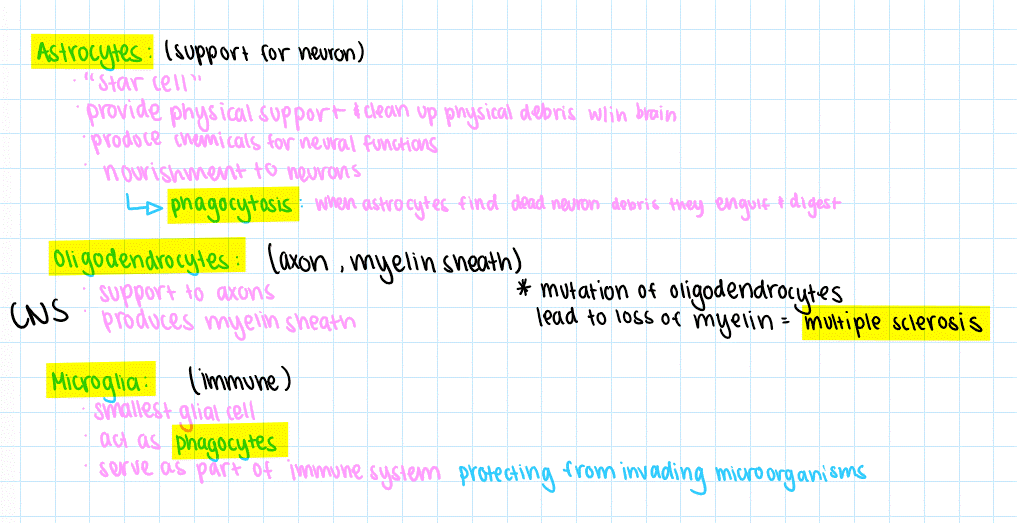
Memory as a neural process: Golgi stain
Camillo Golgi started flawed neuron doctrine
**argued that the nervous system is a continuous network of interconnected fibers (like a web), rather than being made up of discrete, individual cell
stain allowed one to see whole neuron
concluded that have important structural aspects
didn’t know abt the synapse
Stain showed:
soma
neurites: axons and dendrites
Memory as a neural process: Golgi stain
Santiago Cajal contributed to the neuron doctrine
discovered neural circuitry
neurons communicate by contact not continuity
Memory as a neural process: Golgi and Cajal
set up idea to study neurons (didn’t find exact names)
didn’t know about AP’s
found structure must predict function
wtvr these neurons do must be important
Cajal’s neuron doctrine stated that the nervous system is made up of discrete, individual cells (neurons) that communicate with each other at specialized contact points (later called synapses), rather than being one continuous web.
Memory as a neural process: chemical synapses
pre:
mitochondria: vesicles release neurotransmitter
have vesicles
post:
receptors
Memory as a neural process: Jerry Konorski (1903-1973)
**neural plasticity
proposed first theory of associative learning as a result of long-term synaptic plasticity
"The plastic changes would be related to the formation and - multiplication of new synaptic junctions between the axon terminals of one nerve cell and the soma (i.e. the body and the dendrites) of the other"
first person who coined the term “neural plasticity”
discovered type II conditioned reflexes which are now known as operant conditioning or instrumental conditioning
proposed existence of gnostic neuron, called 2 years later by Jerry Lettvin a grandmother cell (a hypothetical neuron that represent complex but specific object of concept like a some one face
Memory as a neural process: Donald Hebb (1904-1985) Hebbian Theory 1949
(often summed up as “cells that fire together, wire together”) states that when one neuron’s firing consistently contributes to the firing of another, the connection (synapse) between them is strengthened, making future communication more efficient.
Biological revolution: classical conditioning in fruit fly drosophila
Seymour Benzer
developed the genetic screen for memory genes. He found that fruit flies are capable of associative classical conditioning. They found mutants that have deficiency in memory. All mutants had deficiency in PKA signaling pathway.
Examples:
-rutabaga - mutation in Adenylyl Cyclase
-DCO – mutation in catalytic subunit of PKA
PKA: protein kinase A pathway is critical for pavlovian conditioning
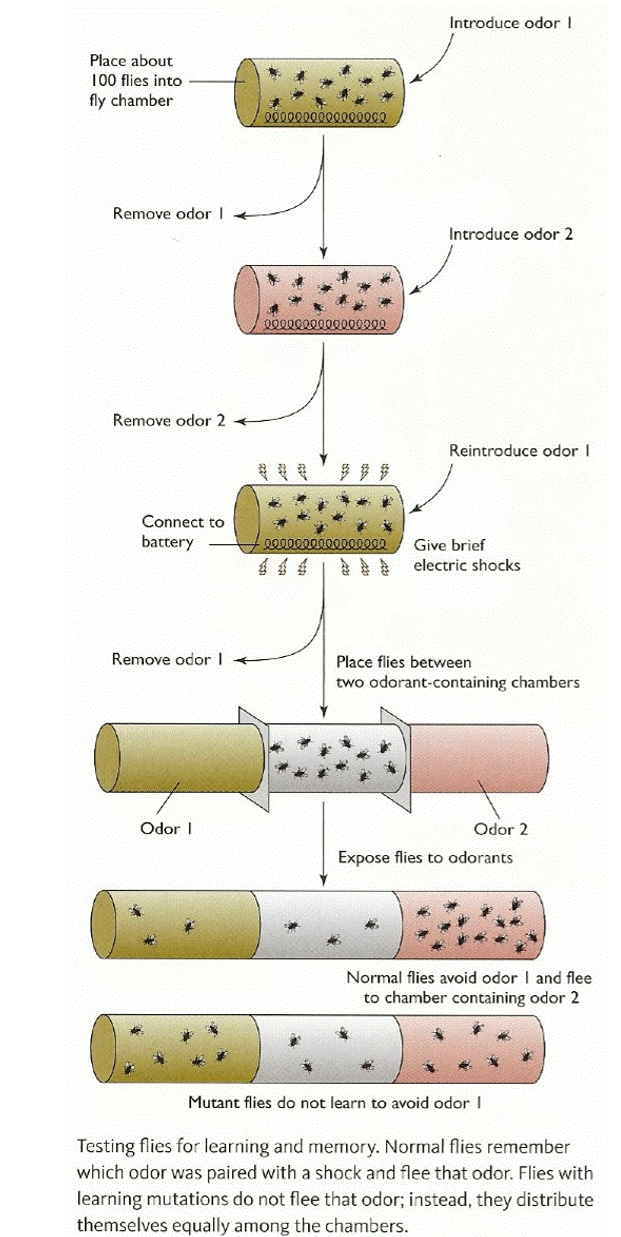
multiple brain systems for memory storage
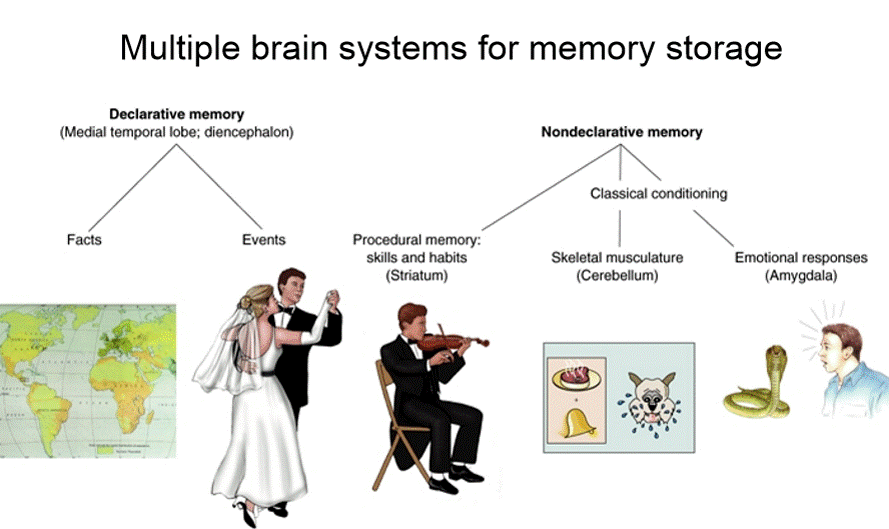
Central sulcus
groove in the cerebral cortex that separates the frontal lobe from the parietal lobe and the primary motor cortex from the primary somatosensory cortex
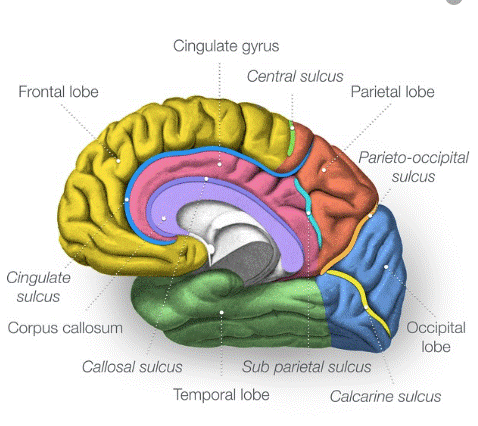
sylvian fissure (lateral sulcus)
begins near the basal forebrain and extends to the lateral surface of the brain separating the frontal and parietal lobes superiorly from the temporal lobe inferiorly
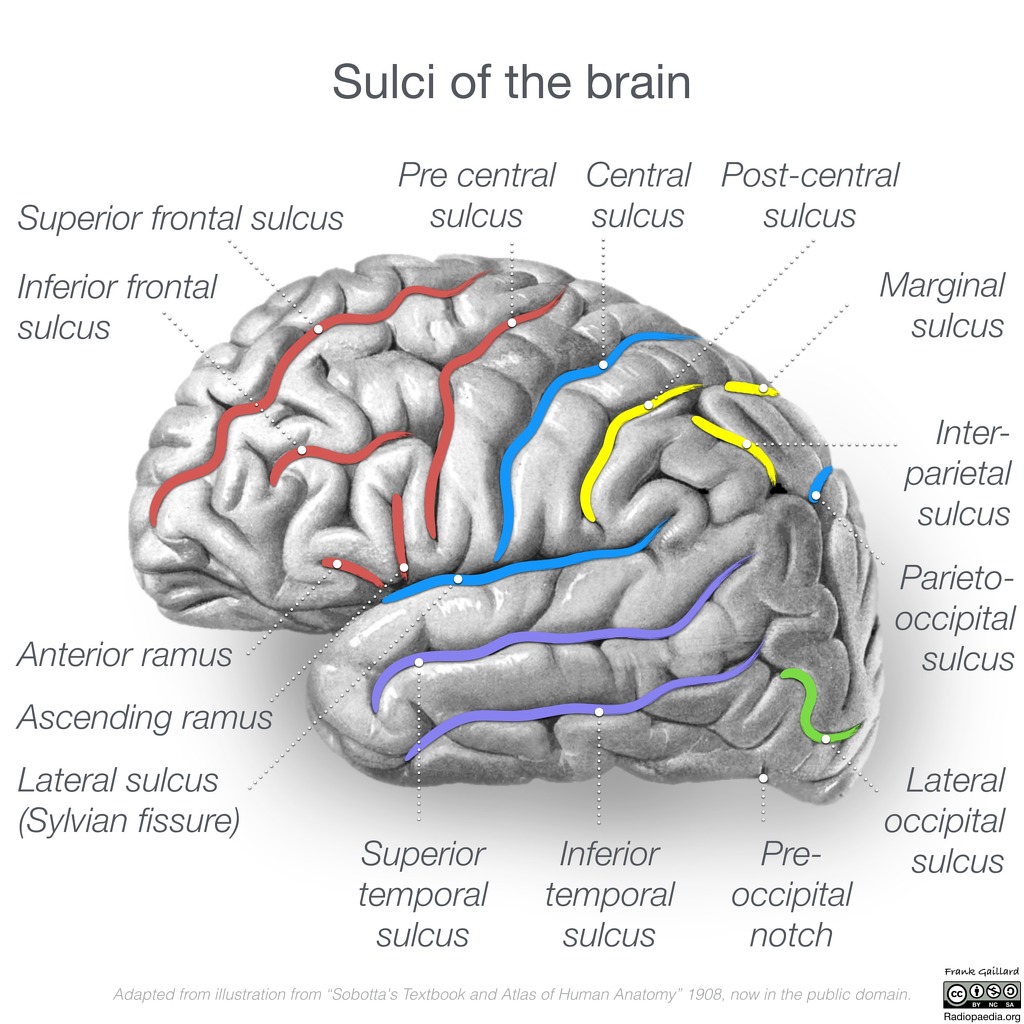
cerebellum
part of the brainstem located at the back of the head below the occipital lobe
Motor coordination: Refines and smooths movements using sensory and motor input.
Balance & posture: Maintains stability and corrects imbalances.
Muscle tone: Regulates stiffness and relaxation of muscles.
Motor learning: Adapts and learns new motor skills.
Cognition: Involved in attention, emotion, and social behavior.
